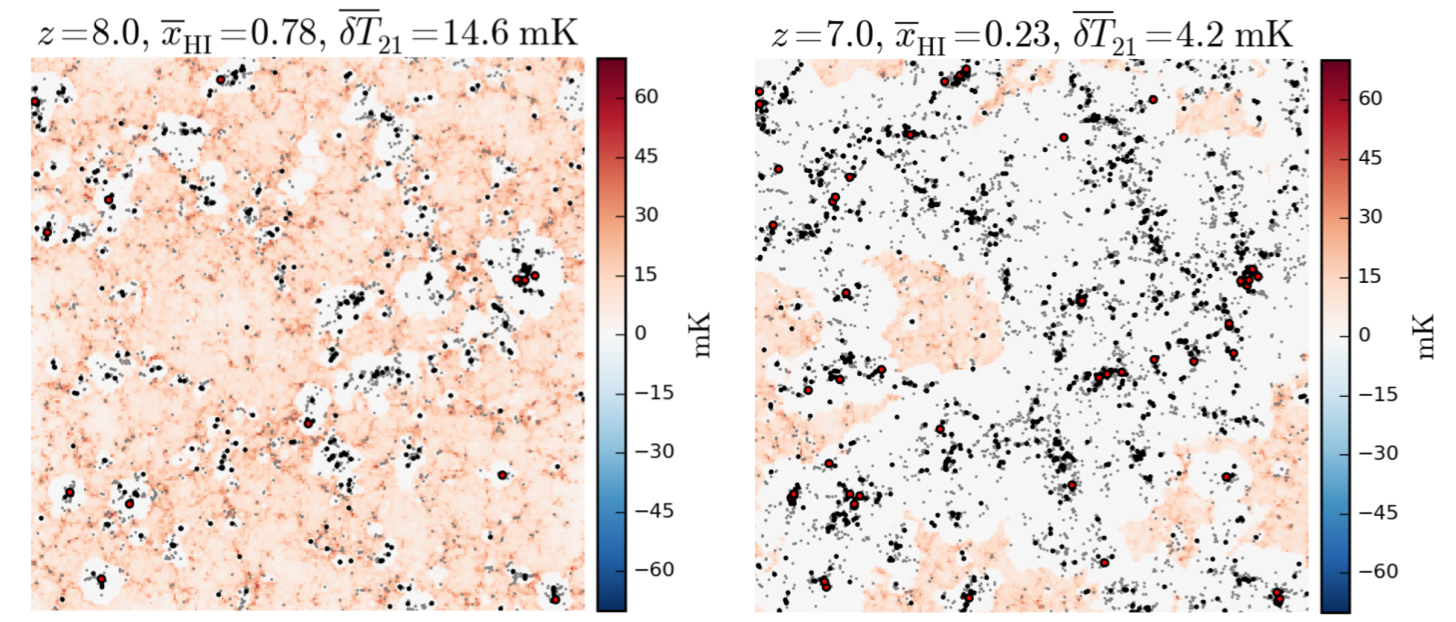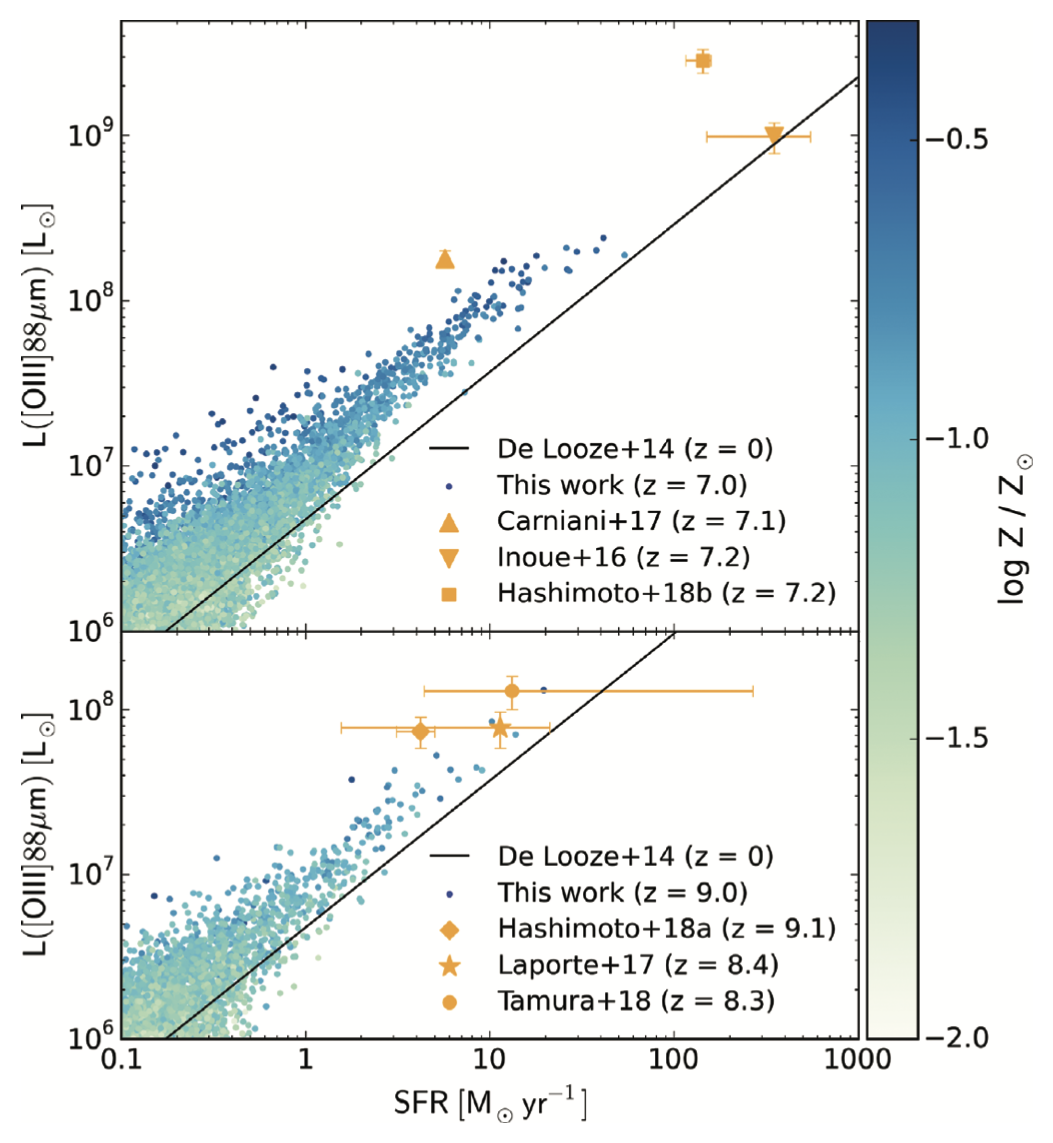CosmoGLINT architecture. The halo mass and the properties of the first through (i-1)-th galaxies are used when sampling the i-th galaxy.
Mock data generated with hydrodynamic simulation (left) and CosmoGLINT (right)
The preparation of mock data is essential for wide-field galaxy surveys. To address this need, Moriwaki et al. (2025) developed CosmoGLINT, a generative model that auto-regressively generate galaxies conditioned on a given halo. The model leverages a Transformer architecture, widely used in large language models, to capture complex dependencies between galaxies. We found that the generated data are statistically consistent with the hydrodynamic simulation used for training. The model can be applied to larger-volume DM-only simulations to produce realistic mock galaxy catalogs for future surveys.
CosmoGLINT architecture. The halo mass and the properties of the first through (i-1)-th galaxies are used when sampling the i-th galaxy.
Mock data generated with hydrodynamic simulation (left) and CosmoGLINT (right)
The large-scale structure (LSS) of the Universe is an important probe in cosmology and galaxy evolution. A new observational technique, line intensity mapping (LIM), enables surveying the LSS over a larger area and at a greater distance than conventional ones. However, the observed maps contain various noises, which can cause systematic errors when analyzing the data. In Moriwaki et al. (2020), we proposed to use a convolutional neural network to extract LSS signals from observed intensity maps. We found that the signal distribution can be reproduced with high accuracy by using a generative adversarial network (GAN). The movie below shows an example of applying GAN to mock observational data.
The noise reduction technique using GAN can also be applied to three-dimensional data obtained from LIM observations. In Moriwaki & Yoshida 2021, we found that we can extract the LSS signals with sufficiently high accuracy even under realistic conditions where instrumental noises exist by devising a network using information on the restframe wavelengths of emission lines.
In recent years, data analysis methods using machine learning have been studied in various fields of astronomy and astrophysics. In such research, it will be important to clarify how the machine learning models process the data and how much uncertainty there is in their output.
From observations of the cosmic microwave background and distant quasars, it is known that ionization of the intergalactic medium (IGM) – cosmic reionization – occurred at redshifts 6 - 10. The 21cm emission line from neutral hydrogen is an important tool for studying this phenomenon, and future telescopes such as SKA are expected to detect the 21cm line signals during the epoch of reionization (EoR) for the first time. However, the large foreground emission poses a serious challenge for such observations.
One of the methods to solely extract the EoR signals is to use cross-correlation. In this method, the contribution of the foreground emissions can be suppressed by combining 21cm data with other LSS tracers such as galaxies. Moriwaki et al. (2019) predict the cross-correlation signals using a cosmological simulation and find that galaxies with bright oxygen emissions can be used to probe the early phases of the EoR. Large telescopes such as LST are expected to play an important role in observing such emission-line galaxies.
In Moriwaki et al. (2024), we further showed that the IGM heating can be robustly investigated by detecting the transition of cross-correlation signals from positive to negative.

Recent observations with ALMA have made it possible to study the internal and kinetic structure of distant galaxies as far as z = 9 using far-infrared emission lines. JWST, launched at the end of 2021, will provide complementary and more detailed information with optical emission lines. Moriwaki et al. (2018) use a large cosmological hydrodynamics simulation to investigate the statistical properties of distant emission-line galaxies and the internal structure of individual galaxies.

